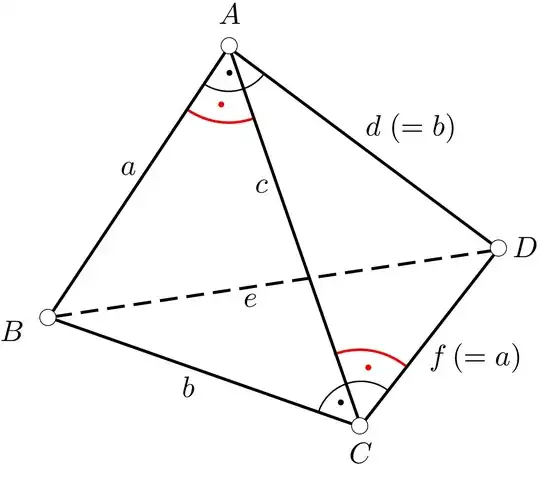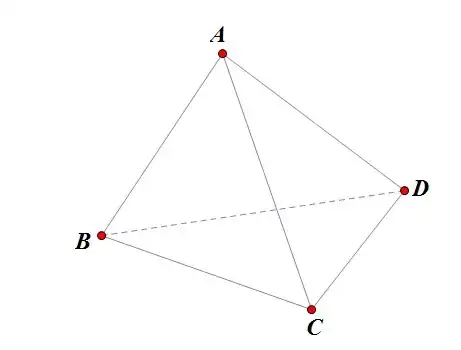${\bf 1\ }$ Assume the side $BD=e$ (dashed in the figure) is a longest side of the tetrahedron. Then it has to be the hypotenuse of both adjacent triangles $ABD$ and $CBD$, so these two triangles have to be congruent.
${\bf 2\ } $ If $BA=BC$ then both triangles $BAC$ and $DAC$ are isosceles with hypotenuse $AC$. Claim: In this case the tetrahedron is flat, making up a square.
Proof. Assume the four points $A$, $B$, $C$, $D$ are not lying in a plane. Then there is exactly one sphere containing all four points. Therefore the two Thales spheres over $BD$ and $AC$ must coincide. It follows that $BD$ and $AC$ intersect in their midpoints, proving that our assumption is untenable.
${\bf 3\ }$ Therefore we may assume $a=BA=DC<BC=DA=b$, where $$a^2+b^2=e^2\ .\tag{1}$$ When triangle $BAC$ has its right angle at $B$ then necessarily $AC=e$, which enforces triangle $DAC$ to have its right angle at $D$, and it follows as in ${\bf 2\ }$ that the tetrahedron is flat, making up a rectangle.
${\bf 4\ }$ As $a<b$ it remains to consider the case that triangle $BAC$ has its right angle at $A$, and triangle $DAC$ has its right angle at $C$. $AC=c$ is then shortest side. It follows that
$$b^2-a^2=c^2\ ,\tag{2}$$
and the similarity condition enforces
$${a\over c}={b\over a}\ .\tag{3}$$

From $(1)-(3)$ we obtain after some computation
$${e\over c}=\sqrt{2+\sqrt{5}}\ ,$$
which is almost what the OP claimed.

